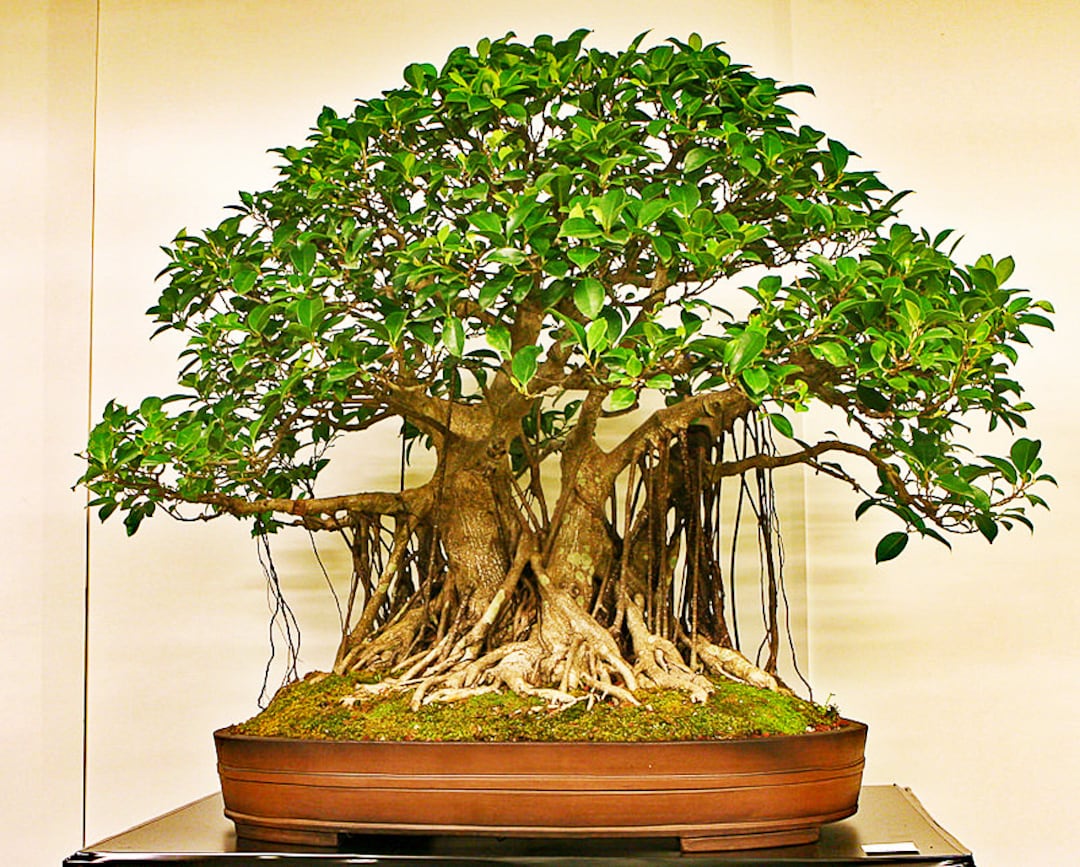The Banyan Bonsai Tree is a miniature version of the grand Banyan tree. It is a popular choice for bonsai enthusiasts. This tree has a rich history and unique characteristics.
History of the Banyan Bonsai Tree
The Banyan tree has been revered for centuries. It is native to India and Southeast Asia. The Banyan Bonsai Tree is a smaller, manageable version. It has been cultivated for its beauty and symbolism.
Symbolism And Cultural Significance
The Banyan tree symbolizes immortality and longevity. In Hindu mythology, it is considered sacred. People often meditate under its branches. The Banyan Bonsai carries the same symbolism. It represents peace and tranquility in your home.
Characteristics of the Banyan Bonsai Tree
The Banyan Bonsai Tree has unique features. These make it stand out among other bonsai trees.
- Foliage: The leaves are broad and glossy. They are dark green and dense.
- Roots: Aerial roots are a key feature. They hang from the branches and reach the ground.
- Trunk: The trunk is thick and sturdy. It gives the tree a strong appearance.
How to Care for Your Banyan Bonsai Tree
Caring for a Banyan Bonsai Tree is simple. Follow these tips to keep your tree healthy and beautiful.
Light Requirements
The Banyan Bonsai Tree loves sunlight. Place it in a spot with plenty of light. A south-facing window is ideal. If you live in a hot climate, provide some shade in the afternoon.
Watering
Water your Banyan Bonsai regularly. The soil should be moist but not soggy. Water when the topsoil feels dry. Avoid letting the roots sit in water.
Soil And Fertilizer
Use well-draining soil for your Banyan Bonsai. A mix of peat, perlite, and sand works well. Fertilize your tree every two weeks during the growing season. Use a balanced liquid fertilizer.
Pruning And Shaping
Pruning is essential for maintaining the shape of your Banyan Bonsai Tree. Trim back new growth to keep the tree compact. Remove any dead or damaged branches. Wiring can help shape the branches. Be gentle to avoid damaging the bark.
Repotting
Repot your Banyan Bonsai every 2-3 years. This ensures healthy root growth. Choose a pot that is slightly larger than the current one. Use fresh soil and trim the roots during repotting.

Credit: www.etsy.com

Credit: www.bonsai-nbf.org
Benefits of Growing a Banyan Bonsai Tree
Growing a Banyan Bonsai Tree has many benefits. It is a rewarding hobby with numerous advantages.
Stress Relief
Working on your bonsai tree can reduce stress. The process is calming and meditative. It helps you focus and relax.
Improves Air Quality
The Banyan Bonsai Tree helps purify the air. It absorbs toxins and releases oxygen. This improves the air quality in your home.
Enhances Home Decor
A Banyan Bonsai Tree adds beauty to any room. Its unique appearance makes it a focal point. It complements various interior styles.
Educational Value
Growing a Banyan Bonsai Tree teaches patience and responsibility. It is a great way to learn about nature and horticulture. Kids can benefit from this educational experience too.
Common Problems and Solutions
Even with proper care, issues may arise. Here are some common problems and solutions for your Banyan Bonsai Tree.
Yellowing Leaves
Yellow leaves can indicate overwatering or underwatering. Check the soil moisture and adjust your watering schedule.
Pests
Pests like aphids and spider mites can harm your tree. Use insecticidal soap to treat infestations. Regularly inspect your tree for signs of pests.
Root Rot
Root rot occurs when the soil is too wet. Ensure proper drainage and avoid overwatering. Repot the tree if necessary.
Conclusion
The Banyan Bonsai Tree is a beautiful and rewarding addition to any home. Its rich history, unique characteristics, and numerous benefits make it a favorite among bonsai enthusiasts. With proper care, your Banyan Bonsai Tree will thrive and bring joy for years to come.
